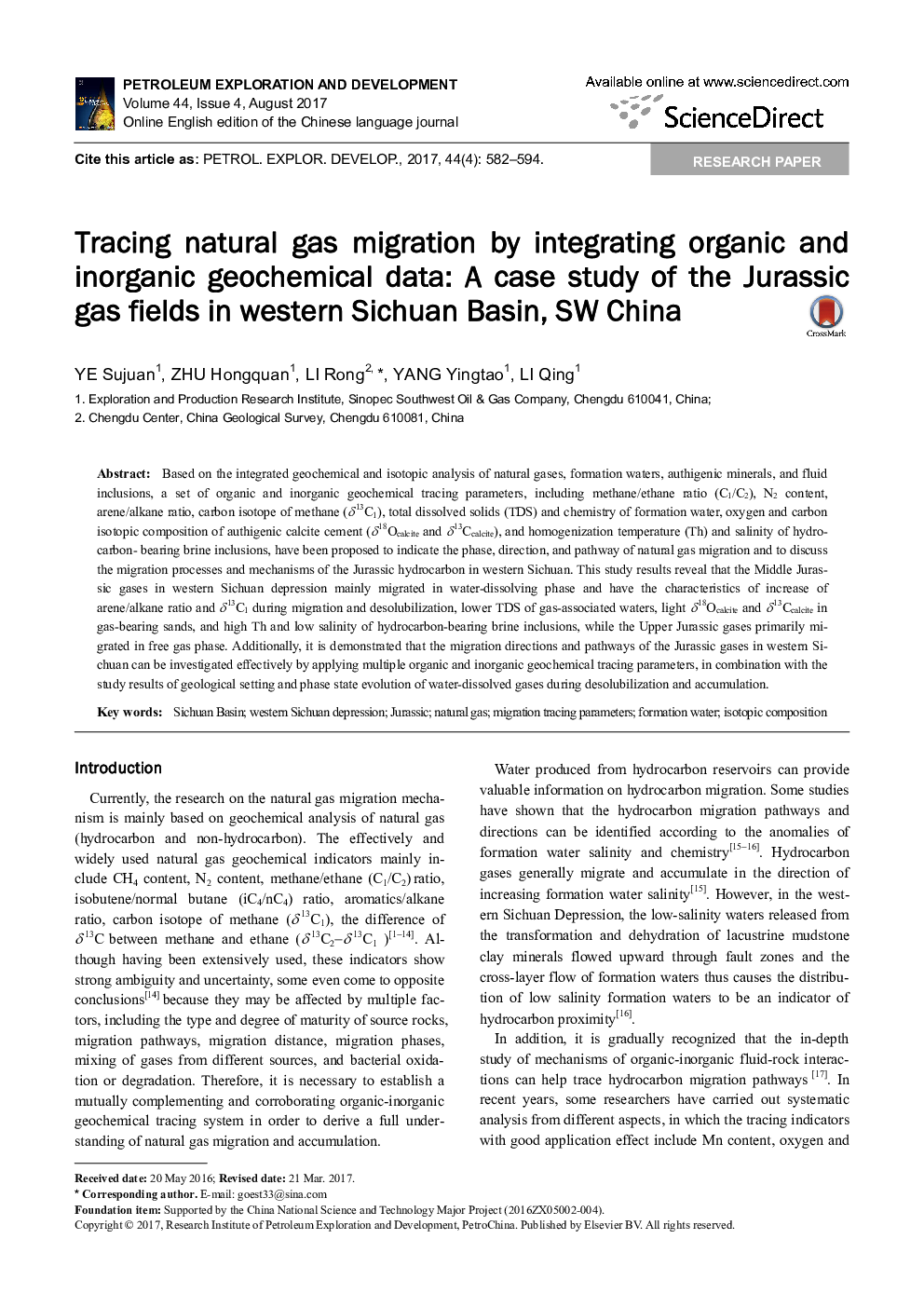| Article ID | Journal | Published Year | Pages | File Type |
|---|---|---|---|---|
| 8912238 | Petroleum Exploration and Development | 2017 | 13 Pages |
Abstract
Based on the integrated geochemical and isotopic analysis of natural gases, formation waters, authigenic minerals, and fluid inclusions, a set of organic and inorganic geochemical tracing parameters, including methane/ethane ratio (C1/C2), N2 content, arene/alkane ratio, carbon isotope of methane (δ13C1), total dissolved solids (TDS) and chemistry of formation water, oxygen and carbon isotopic composition of authigenic calcite cement (δ18Ocalcite and δ13Ccalcite), and homogenization temperature (Th) and salinity of hydrocarbon-bearing brine inclusions, have been proposed to indicate the phase, direction, and pathway of natural gas migration and to discuss the migration processes and mechanisms of the Jurassic hydrocarbon in western Sichuan. This study results reveal that the Middle Jurassic gases in western Sichuan depression mainly migrated in water-dissolving phase and have the characteristics of increase of arene/alkane ratio and δ13C1 during migration and desolubilization, lower TDS of gas-associated waters, light δ18Ocalcite and δ13Ccalcite in gas-bearing sands, and high Th and low salinity of hydrocarbon-bearing brine inclusions, while the Upper Jurassic gases primarily migrated in free gas phase. Additionally, it is demonstrated that the migration directions and pathways of the Jurassic gases in western Sichuan can be investigated effectively by applying multiple organic and inorganic geochemical tracing parameters, in combination with the study results of geological setting and phase state evolution of water-dissolved gases during desolubilization and accumulation.
Related Topics
Physical Sciences and Engineering
Earth and Planetary Sciences
Geochemistry and Petrology
Authors
Sujuan YE, Hongquan ZHU, Rong LI, Yingtao YANG, Qing LI,
